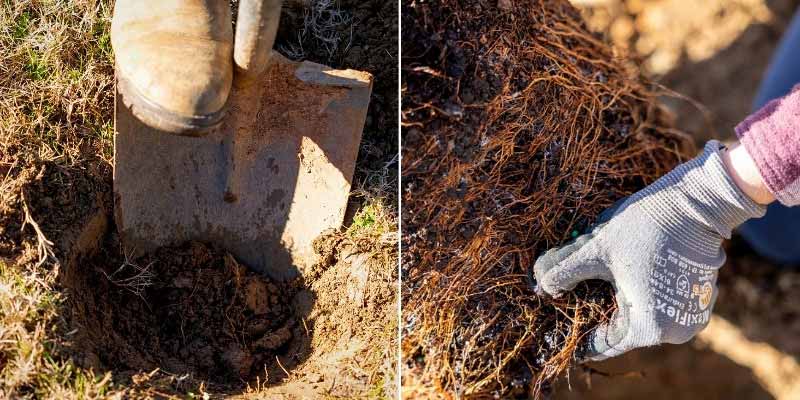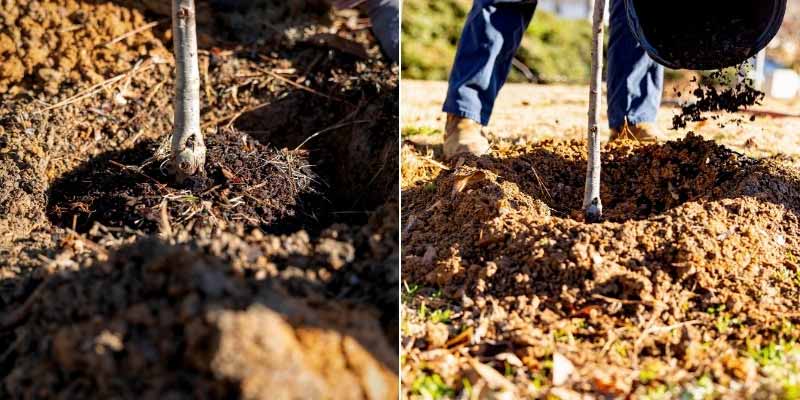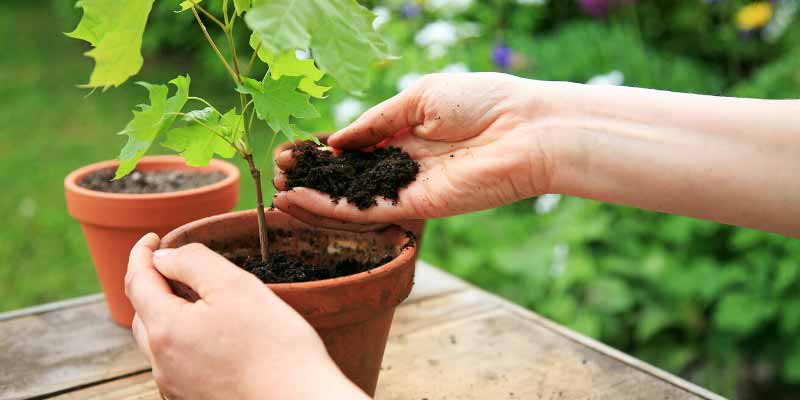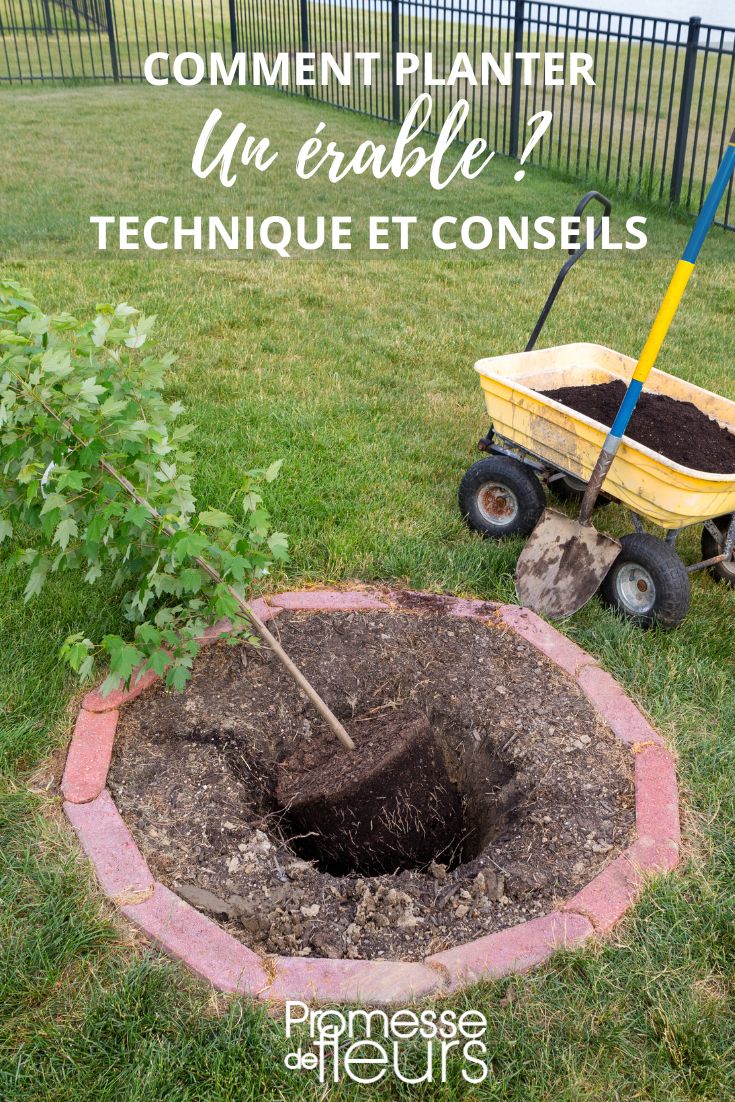Maples, or Acer, are trees or bushes valued for their unique bark, sometimes resembling snakeskin, and for their striking, palmate foliage. This often takes on intense, glowing colours in autumn. Generally hardy, they tolerate temperatures below -20°C, but prefer to be planted sheltered from strong winds and sea spray. They are very easy to grow in temperate, cool to moist climates and in well-drained soil in sun or partial shade. They can be used throughout the garden: as specimen, in borders, grouped in a copse and some species are even ideal for growing as bonsai or in pots. Discover secrets for successful planting in pots or in ground.
For full information on their culture, consult our complete sheet: "Maples: Planting, pruning and care"
When to plant maples?
Acer is preferably planted in autumn in any soil deep enough to accommodate its powerful root system. This season allows roots to establish in soil still warm and regularly watered by rain. However, it is also possible to plant in spring, with more frequent watering, especially if you choose a container-grown maple.
Where to plant a maple?
Location
Location is crucial for health of maple. It is a hardy, undemanding species that only dislikes situations that are too hot or too windy. Choose a position with a sunny (non-scorching) to partly shaded but bright exposure. Plant it sheltered from strong or dry winds. Select a spot taking into account mature size of maple. While large maples such as sycamore or plane maple exceed 20–30 m in height, many cultivars have moderate dimensions ranging from 5 to 10 m high, which allows planting in most gardens.
Maples are used in every corner of the garden. In a large garden, plant them alongside other trees that colour in autumn. They have their place in a border, in an informal hedge, as a specimen or in a copse which will form a flamboyant focal point at garden edges in autumn.
Soil type
Ensure soil is well drained and rich in organic matter. Maple prefers deep, cool soil throughout the year. Unlike Japanese maples, reserved for acid soils known as « heather soil », other Acer tolerate presence of limestone in soil fairly well. Avoid heavy clay soils, which can retain water and cause root rot.
How to plant a maple in the ground?
- For container-grown specimens, soak the rootball in a tub of water for a few moments before planting.
- Then dig a planting hole using a spade or a shovel, twice as wide as the root system and as deep as the rootball
- Improve soil if too poor by adding some compost or well-rotted manure, mixing it with planting soil.
- In heavy soil, place gravel or coarse sand at bottom of hole to improve drainage around the roots

- Carefully remove maple from its pot, then tease underside of rootball to loosen the roots slightly
- Place maple in centre of planting hole, ensuring top of rootball is level with soil
- Tie the stake to the young plant
- Fill hole with soil mix, then firm gently
- Water thoroughly after planting and keep soil moist during first two or three years following planting, especially in summer and autumn
- Mulch around base to keep soil cool in summer

Materials needed
- A spade or shovel
- Compost or manure to enrich soil
- Possibly coarse sand or gravel for drainage
- A stake
- Organic mulch
- A watering can
How to plant a maple in a pot?
Certain moderate-sized varieties such as Acer ginnala 'Bailey Compact', not exceeding 2.50 m in any direction at ripeness, are perfectly suited to growing in a pot and can also be trained as bonsai. Grown in pots, maples need more attention: regular watering in summer to keep the growing medium cool.
- Choose a pot with drainage holes, large enough for maple to develop well
- Ensure perfect drainage by placing clay pebbles, or pumice at bottom of pot
- Plant in a mix of potting compost and a few handfuls of organic fertiliser
- Place maple in pot, ensuring rootball is level with pot rim
- Fill gaps with potting compost, firm gently
- Water generously and place pot where maple will receive adequate light
- Place an organic mulch at base of the bush (straw, wood chips...), to help keep substrate moist in summer
- Water regularly
- Repot every year into a larger container

Materials needed
- A pot with drainage holes
- A good multi-purpose potting compost
- Clay pebbles or pumice (for pot planting)
- Optional mulch
- A watering can
































Feedbacks